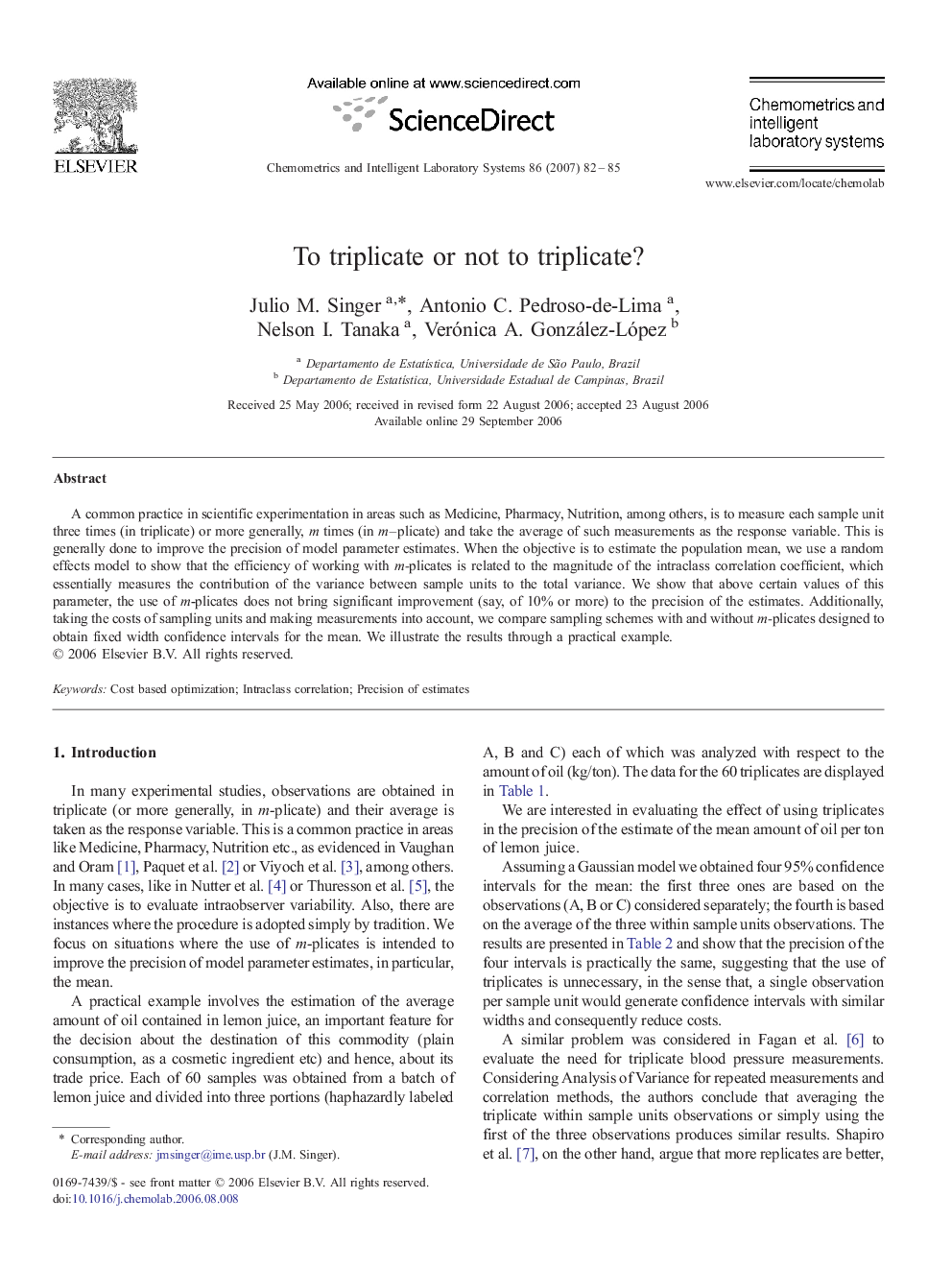| Article ID | Journal | Published Year | Pages | File Type |
|---|---|---|---|---|
| 1180606 | Chemometrics and Intelligent Laboratory Systems | 2007 | 4 Pages |
A common practice in scientific experimentation in areas such as Medicine, Pharmacy, Nutrition, among others, is to measure each sample unit three times (in triplicate) or more generally, m times (in m–plicate) and take the average of such measurements as the response variable. This is generally done to improve the precision of model parameter estimates. When the objective is to estimate the population mean, we use a random effects model to show that the efficiency of working with m-plicates is related to the magnitude of the intraclass correlation coefficient, which essentially measures the contribution of the variance between sample units to the total variance. We show that above certain values of this parameter, the use of m-plicates does not bring significant improvement (say, of 10% or more) to the precision of the estimates. Additionally, taking the costs of sampling units and making measurements into account, we compare sampling schemes with and without m-plicates designed to obtain fixed width confidence intervals for the mean. We illustrate the results through a practical example.
